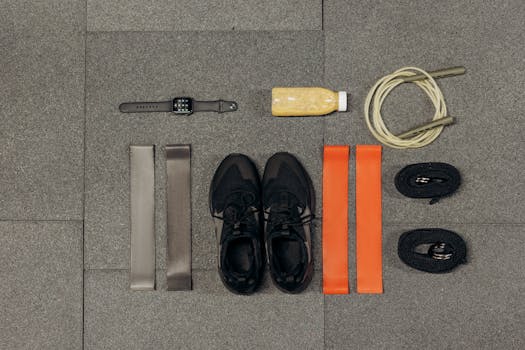
Strength Training for Beginners: How to Get Started Safely
Takeaways: Strength training is an excellent way to improve your overall health and fitness. As a beginner, it’s crucial to start with the right techniques, understand your body, and prioritize safety to achieve your fitness goals effectively.
Strength training can be intimidating for newcomers, but with the right guidance, it can be a rewarding and enjoyable experience. In this article, we’ll cover everything you need to know to get started on your strength training journey safely.
Understanding Strength Training
Strength training, also known as resistance training, involves exercising your muscles against resistance to build strength, endurance, and muscle mass. This can be achieved using free weights, machines, resistance bands, or even your body weight. It’s not just about lifting heavy weights; it’s about understanding your body and progressively challenging your muscles.
The Benefits of Strength Training
- Increased Muscle Strength: Regular strength training helps increase muscle strength and endurance.
- Improved Metabolism: Building muscle boosts your resting metabolic rate, helping you burn more calories even at rest.
- Enhanced Bone Health: Strength training increases bone density, reducing the risk of osteoporosis.
- Better Functional Fitness: It improves your ability to perform daily tasks efficiently.
- Mental Wellbeing: Exercise has been shown to reduce symptoms of anxiety and depression.
Getting Started with Strength Training
1. Setting Goals
Before you start your strength training journey, it’s essential to set specific, measurable, achievable, relevant, and time-bound (SMART) goals. Whether your aim is to lose weight, build muscle, or improve athletic performance, having clear goals will help keep you motivated and focused.
2. Choosing the Right Equipment
As a beginner, you don’t need a full gym setup. Consider starting with:
- Body Weight Exercises: Push-ups, squats, and lunges are great ways to build strength without equipment.
- Dumbbells: A set of adjustable dumbbells can provide a versatile option for various exercises.
- Resistance Bands: These are affordable, portable, and can add resistance to bodyweight exercises.
3. Learning Proper Techniques
Proper form is critical in strength training to avoid injuries. Take the time to learn the correct techniques for each exercise. Consider working with a certified personal trainer, watching instructional videos, or attending group fitness classes.
4. Developing a Routine
Start with a balanced routine that targets all major muscle groups. Aim for 2-3 strength training sessions per week, allowing at least one day of rest between sessions. A sample beginner routine might include:
- Day 1: Upper Body (Push-ups, Dumbbell Press, Rows)
- Day 2: Lower Body (Squats, Lunges, Deadlifts)
- Day 3: Full Body (Kettlebell Swings, Planks, Burpees)
5. Listening to Your Body
As you start strength training, it’s crucial to pay attention to how your body feels. If you experience pain (not to be confused with the normal discomfort of exertion), stop and reassess your form or the weight you’re using. It’s better to progress slowly and avoid injury than to rush into heavier weights.
Conclusion

FAQs
What should I do if I’m unsure how to perform an exercise correctly?

How often should beginners strength train?
Beginners should aim for 2-3 strength training sessions a week, ensuring to allow rest days for muscle recovery.
Can I do strength training at home?
Absolutely! Many effective strength training exercises can be done at home using body weight, dumbbells, or resistance bands.
How long before I see results from strength training?
Results can vary, but many beginners may start to see improvements in strength and muscle definition within 4-8 weeks of consistent training.
Is strength training safe for everyone?
Generally, strength training is safe for most people. However, individuals with existing health conditions should consult with a healthcare provider before starting any new exercise program.






